Exoskeleton
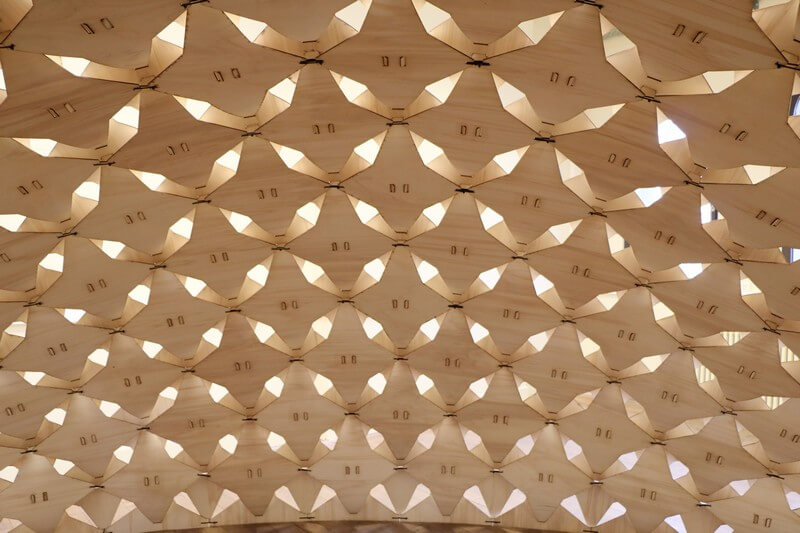
The structural design of ‘Exoskeleton’, a pavilion exploring the possibilities of computer-aided manufacturing in prototyping, is a proposal by students of University of Ghent that addresses full-scale construction and experimentation with limited resources and rapid manufacturing techniques as an engine to promote architectural design. The project, an assembly system of modules designed with different dimensions, allows different surfaces to be generated from simple joints, without nails or screws.
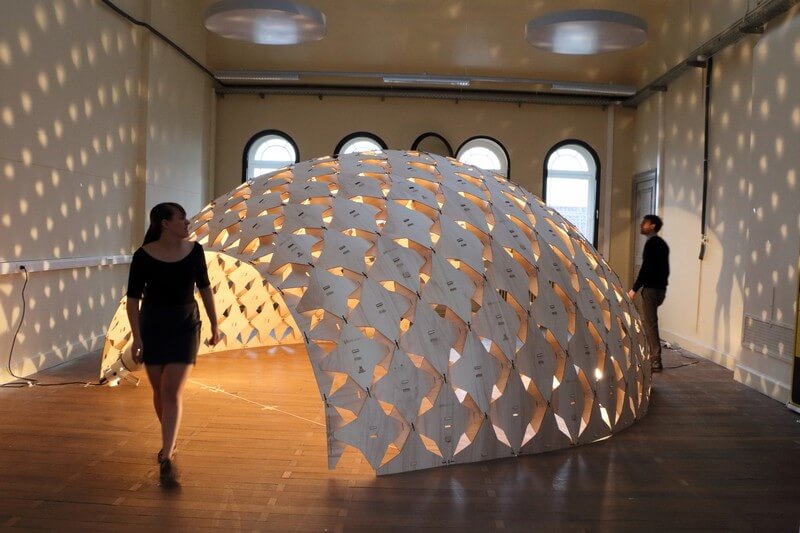
It investigated the “bottom-up” approach to structural design through prototyping, a subcategory of digital fabrication. The design of a small canopy, the Exoskeleton, served as a case study. This “bottom-up” approach allowed working in an empirical way; the new ideas were validated through immediate physical tests of their constructive behavior.

In this way, the total design of the pavilion did not emerge from a global three-dimensional model, which derived components from the general shape, but from an iterative design process, where first the components and only later the general shape were determined through creation. of prototypes.
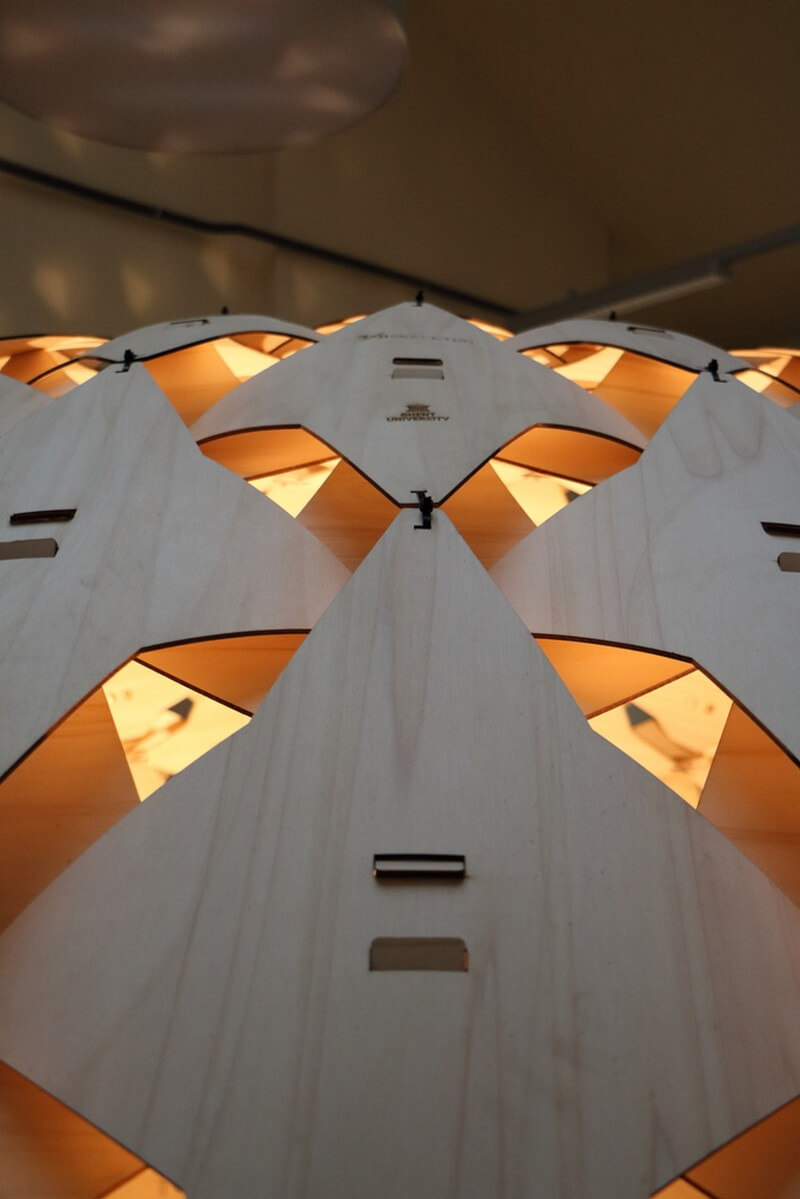
The application of this bottom-up approach to structural design allowed a detachment of well-defined structural typologies. Since knowledge was gradually accumulated during the design process, this approach allowed investigating innovative structural principles or a new application of a certain material. A practical understanding of the structural behavior of a given construction was developed during the design process.
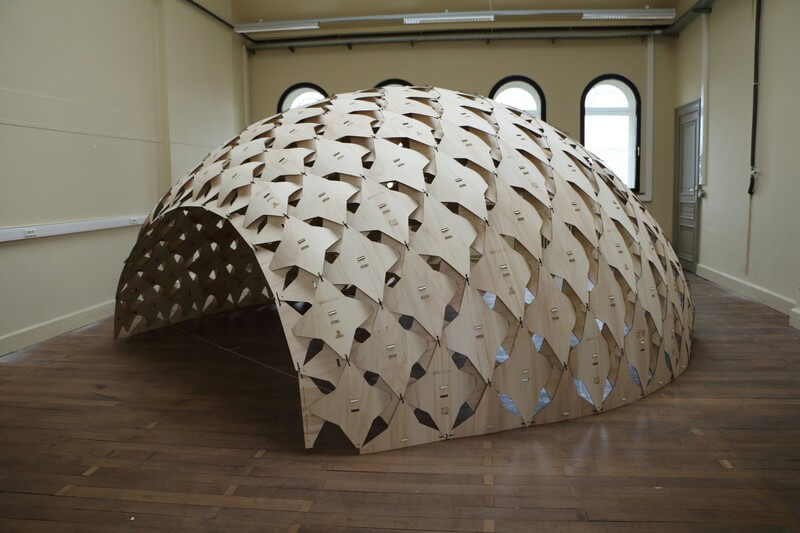
Computer aided manufacturing was central to this approach, as it enables the rapid manufacturing of numerous prototypes. This rapid prototyping method allowed designers to quickly test and learn. Making the design process affordable was only possible if the materials used for the physical models were cheap and the manufacturing techniques were fast. Therefore, budget constraints and the availability of manufacturing techniques were considered from the start of the design process.
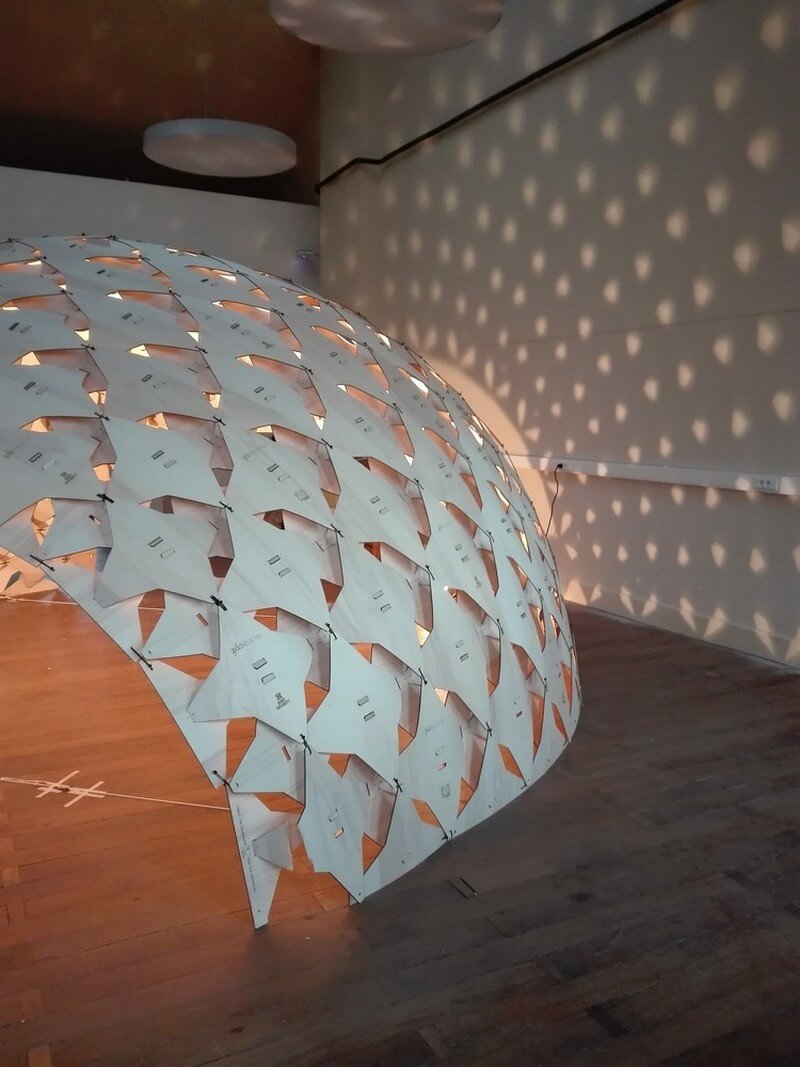
Thin plywood panels were chosen as the material and 2D CNC (laser cutting and milling) techniques as the form process. An investigation into the characteristics and physical behavior of the material was decisive for the design, since this bottom-up design process starts from the possibilities found within the material itself.
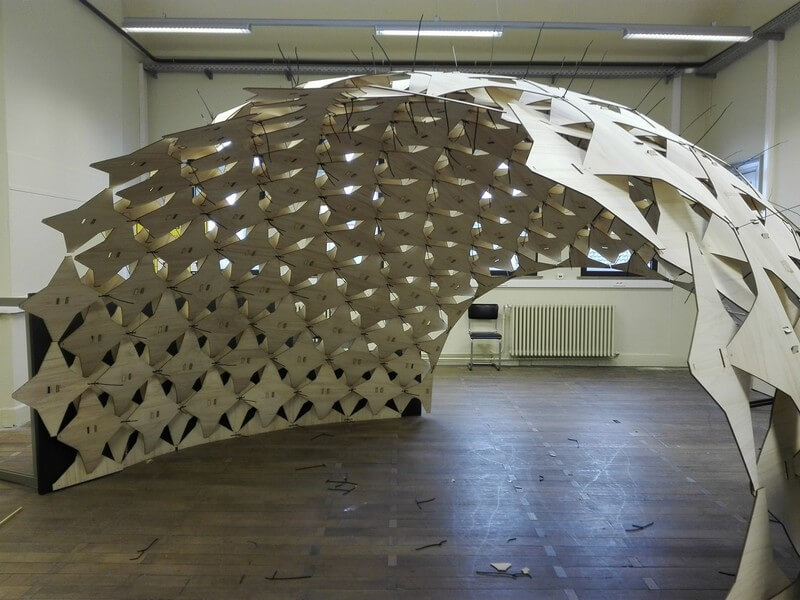
Starting from the smallest element, the consequences and possibilities were investigated for an ascending hierarchy of scales. The design was driven by a continuous exchange of information between physical scale models, full scale prototypes and the digital model.
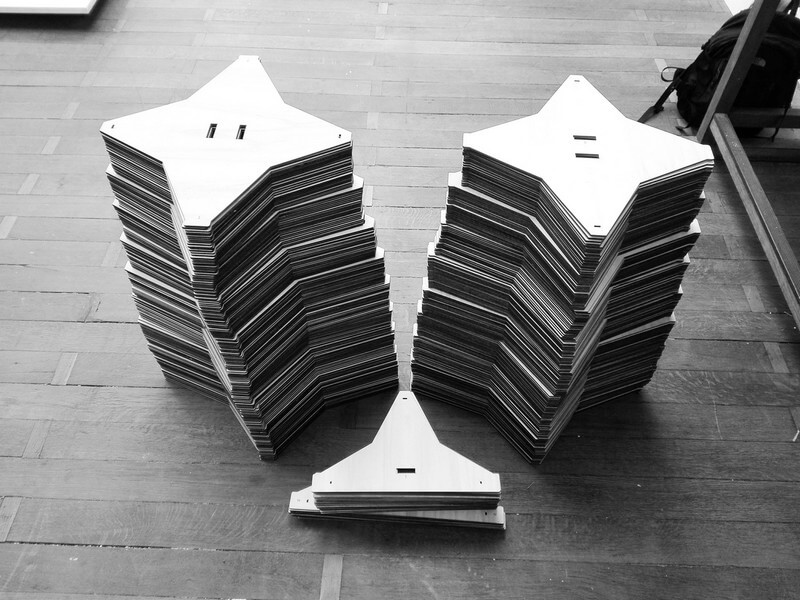
The goal was to build a structurally challenging pavilion that was digitally manufactured, in a limited span of time and with limited resources. This makes the pavilion accessible to all who have access to a fablab, as the pavilion does not rely on complicated digital fabrication techniques. Applying a bottom-up approach to structural design with rapid prototyping was the most effective way to achieve this.
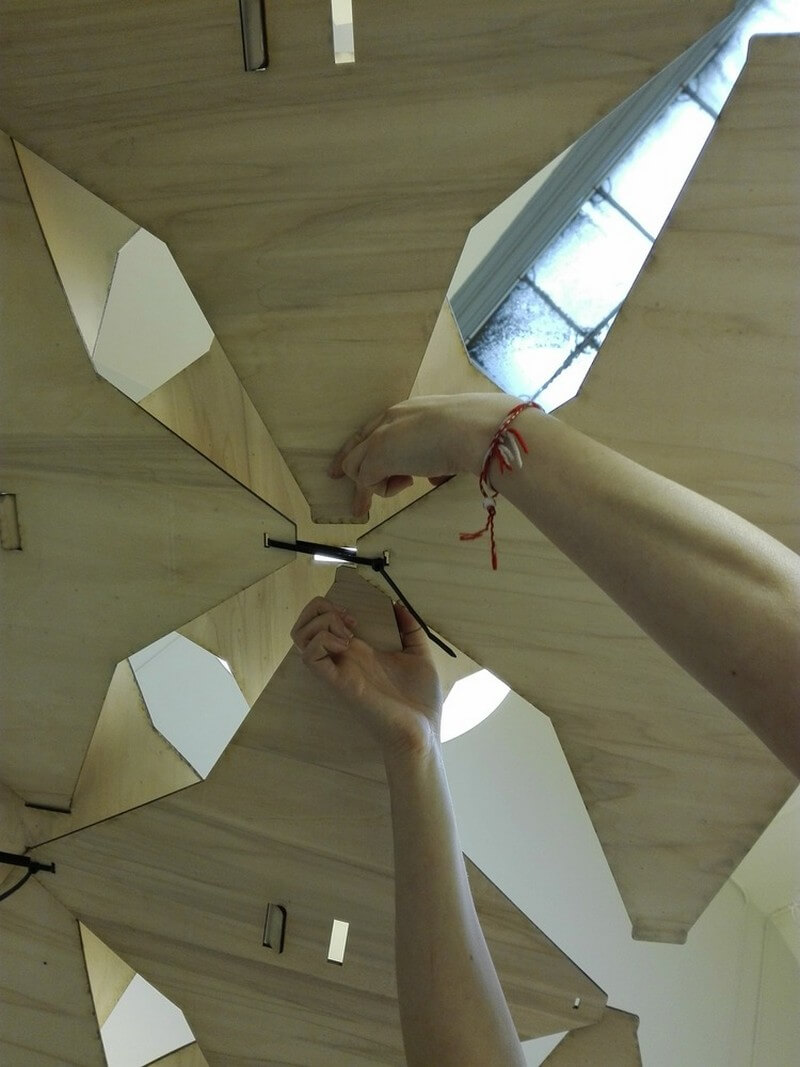
Specific objectives have been proposed for the design of the pavilion itself. First of all, the amount of resources needed to assemble and build the general pavilion should be as limited as possible. This lowers the total cost and creates an affordable canopy. Furthermore, the canopy must be hand-built and it must be possible to dismantle it easily. Only the materials and manufacturing techniques that are widely available should be used, making the assembly of this canopy accessible to a large group of people.
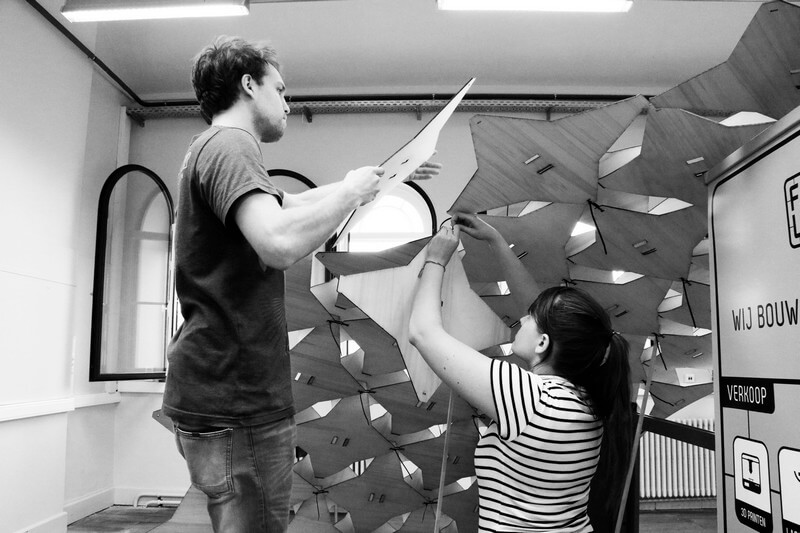




























Comments
VanessaSabrina
Hi ! Is there an Exoskeleton Plug- In available to Rhino 7 ? Many regards Vanessa